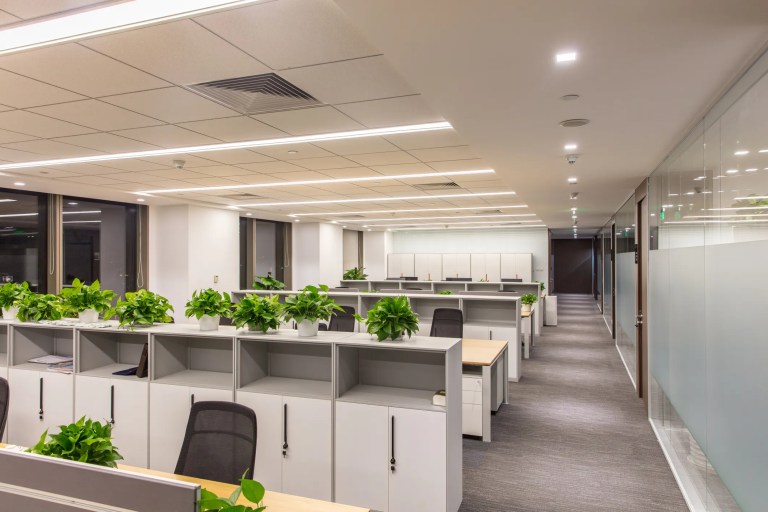ANSI/ASA S12.60/Part 1-2010 (R2020): Acoustical Performance

Poor acoustical design can often be a problem in the classroom because it results in excessive noise that is disruptive to the learning process and can negatively affect speech perception, student behavior, and educational outcomes. ANSI/ASA S12.60/Part 1-2010 (R2020): Acoustical Performance Criteria, Design Requirements, And Guidelines For Schools, Part 1: Permanent Schools provides a minimum set of requirements intended to help school planners and designers provide good acoustical characteristics for classrooms.
Why Are Acoustical Characteristics in a Classroom Important?
ANSI/ASA S12.60/Part 1-2010 (R2020) states that it is essential that both architectural and mechanical design provide good acoustical characteristics for classrooms and other learning spaces in which speech communication is an important part of the learning process. Excessive background noise or reverberation in classroom spaces interferes with speech communication and consequently presents an acoustical impediment to learning. When a classroom has good acoustical characteristics, learning is easier, deeper, more sustained, and less fatiguing. Additionally, there can be more verbal interaction and less repetition between teacher and students when spoken words are clearly heard and understood. In sum, suitable acoustical design in classrooms and other learning spaces enhances speech clarity and limits background noise to protect speech quality for students and teachers.
What Is ANSI/ASA S12.60/Part 1?
ANSI/ASA S12.60/Part 1-2010 (R2020) is applicable to core learning spaces and classrooms with interior volumes not exceeding 566 m3 (20 000 ft3) and to ancillary learning spaces of any volume. Learning spaces with volumes larger than 566 m3 (20 000 ft3) are considered ancillary learning spaces for purposes of this American National Standard. Acoustical performance criteria are specified in ANSI/ASA S12.60/Part 1-2010 (R2020) by limits on the greatest one-hour average A-weighted and C-weighted background noise levels and by limits on reverberation times when students are expected to be present.
The standard applies to siting and building-design-dependent sources of intrusive noise in learning spaces in schools, including noise produced by heating, ventilating, and air-conditioning (HVAC) systems; building services; and exterior sound sources such as vehicular traffic and aircraft overflights. It applies to the design and performance of unoccupied spaces and does not apply to sound generated within a classroom by its occupants including voices and the sounds of classroom activities such as the moving of chairs, nor does it apply to the sound from portable or permanent built-in equipment used during the course of instruction, such as computers, as long as the equipment can be turned off in the room.
ANSI/ASA S12.60/Part 1-2010 (R2020) does not apply for natatoria, auditoria, music performance spaces, teleconferencing rooms, or special education rooms such as those for severely acoustically challenged students, which all require special acoustical design and treatment that is not within the scope of this standard. It also does not apply to relocatable classrooms or relocatable modular learning spaces, which are covered by ANSI/ASA S12.60-2009/Part 2 (R2020).
What Are the Qualities of a Good Acoustical Environment?
A room that has been properly treated to have a good acoustical environment should have adequate loudness, a relatively uniform sound level, high Sound Transmission Class (STC), low background noise levels, an appropriate reverberation time, and no acoustical defects. Each of these characteristics work in unison to create a learning environment that allows speech to be heard clearly.
- Adequate Loudness: classroom noise levels often reach 50-60 dB or higher, which is far above the recommended 35 dB. Further, the classroom environment should support speech intelligibility—the spoken clarity or the proportion of a speaker’s output that a listener can readily understand.
- Sound Level: background sound levels should be steady. ANSI/ASA S12.60/Part 1-2010 (R2020) states that the criterion for steady background sound levels should be that the difference between the highest and lowest data sound levels of the five 60-second samples is not more than 3 dB.
- Sound Transmission Class (STC): according toANSI/ASA S12.60/Part 1-2010 (R2020), the isolation between core learning spaces and mechanical equipment rooms should have a STC rating of 60 or greater unless it is shown that the sound level in the mechanical equipment room combined with a lower STC rating can achieve the required sound level in the core learning space. In no case should the design STC between such spaces be less than 45. The higher the STC rating, the better sound isolation the wall assembly is to achieve.
- Background Noise: any unwanted sound that can be heard besides the main sound source. It can include factors such as HVAC noise, electrical noise, traffic and airplanes, and even extraneous speech.
- Reverberation Time (RT): the time required for the level of a steady sound to decay by 60 dB after it has been turned off. Generally, the more that speech is the primary use of the room, the lower the ideal reverberation time should be as this avoid the muffling of words. Rooms used for musical applications, for instance, tend to benefit from a longer reverberation time, adding warmth and presence to the music.
- Acoustical defects: the outcome of formation of sound foci (e.g., distinct echoes), which can contribute to poor intelligibility and general discomfort in rooms. Defects typically occurs due to the presence of a concave surface, causing sound at the curve’s center to be much louder than the surrounding areas because of the reflection summation.
Controlling Noise Levels in Classrooms
The control of background noise levels in ANSI/ASA S12.60/Part 1-2010 (R2020) is achieved, in part, by specifying the minimum outdoor-to-indoor transmission class (OITC) ratings and sound transmission class (STC) ratings, depending upon the sound source, to reduce noise that intrudes into the classroom or learning space from sources outside of the building envelope, and specifying minimum STC ratings for walls and floor-ceiling assemblies where noise that originates within the school building intrudes into the classroom through classroom walls and floor/ceiling assemblies. The control of noise from footsteps or other impacts on a floor above is achieved by specifying an impact insulation class (IIC) rating for the floor/ceiling assembly.
ANSI/ASA S12.60/Part 1-2010 (R2020): Acoustical Performance Criteria, Design Requirements, And Guidelines For Schools, Part 1: Permanent Schools is available on the ANSI Webstore.






